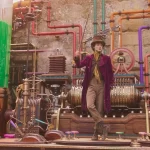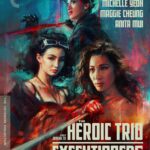The Witness: Uncovering an American Myth, by Ian Brill
The story of Kitty Genovese has remained in the American mindset for over 50 years. The most well-known version of the story is that on March 13th, 1964, in Kew Gardens, Queens, 28-year-old Kitty has stabbed to death while 38 eye witnesses heard her screams, saw her death, and did nothing. In the documentary The Witness, we see the story invoked in television shows from All in the Family to Law & Order. Then-president Bill Clinton tells of it in a speech. Not included in the film is how the Kitty Genovese story is part of the origin of the character Rorschach in the graphic novel Watchmen. Ironically, William Genovese, Kitty’s brother and the film’s protagonist, discusses how his sister’s murder and the ensuing story is like a Rorschach test. People see what they want to see in it. Kitty Genovese’s murder has become a modern American myth. Like all myths, truth is only part of the tale. William Genovese is determined to discover the whole truth. In doing so, he and director James Solomon tell us a story about the stories we tell ourselves.
The film spans 2004 to 2014, taking place between the 40th anniversary of Kitty’s death and the 50th. The New York Times, who first made the story famous, has begun to take apart their original account of Kitty’s murder, edited by A.M. Rosenthal, who later wrote a book about the murder. William becomes something of a private-eye, reading the original police reports and interviewing the surviving witnesses, of which there are few. Still, some people involved in the original case are in the film. Early on, William interview Michael Farrar, who lived in Kew Garden and heard the murder when he was only 13. His mother was a friend of Kitty, and when the elder Farrar heard the murder she rushed downstairs, holding Kitty. Kitty died in the arms of a friend. Kitty’s death is discussed as the cruelest example of urban apathy. In truth, there was an intimate, though no less tragic, moment of human connection in her final minutes.
The film has the feel of a great true crime story as William uncovers more facts about the tragedy. The 38 witnesses were mostly ear-witnesses, not eye-witnesses. Some did call the police, and some were told the police were already on their way. The truth is much more complicated than what was reported. So why has it taken so long for the truth to come out? Over the course of production, William was able to interview the late Mike Wallace, who hosted a CBS Radio special on Kitty’s murder entitled “The Apathetic American.” Wallace tells William that the story was never questioned, because The New York Times’ report on the murder was considered holy writ, as was everything The New York Times reported then. William is able to speak to people very important to the case, yielding some deeply felt surprises and revelations.
The Witness is not just a true crime documentary, though. William and Solomon explore how Kitty’s death affected her family, in particular William. The Genovese family believed the mythic version of the murder as much as anyone else, and William chose to join the Marines and fight in Vietnam after high school because of this. He could not bear to be the apathetic bystander during this conflict. He lost both his legs in the war, and the film follows him in his wheelchair or when he stands on the ground, including the place of Kitty’s death, from the torso up.
Perhaps the most important side of the story The Witness tells is Kitty’s life before her murder. William was close to his sister, but she was 12 years older than him and there was much of her life she didn’t discuss with her family. Notably, that she was a lesbian. Her roommate, Mary Ann Zielonko, was also her lover and the one who identified her body for the police. This part of story was never in the public consciousness. One wonders, certainly in light of the recent Orlando nightclub shooting, how America’s attitudes towards the LGBT community would have been different if people knew the victim of this oft-invoked murder was gay.
William has an audio-only interview Zielonko, and it allows Solomon to make full use of the animation he uses sparingly in the rest of the film. The animation by Ignatz Johnson Higham, Daniela Negrin Ochoa, and Marie-Margaux Tsakiri-Scanatovits are line drawings over simple pallets, peopled by figures without faces. They style reflects how memory can fade while certain elements remain.
The Witness is a transfixing and emotional documentary, one that shares deep truths about a family, New York City, and America. It explores the human need for a narrative, as we try to make sense of a world that often does not. I can strongly recommend it as a gripping story, while wondering what the appeal of stories truly means for us.






























